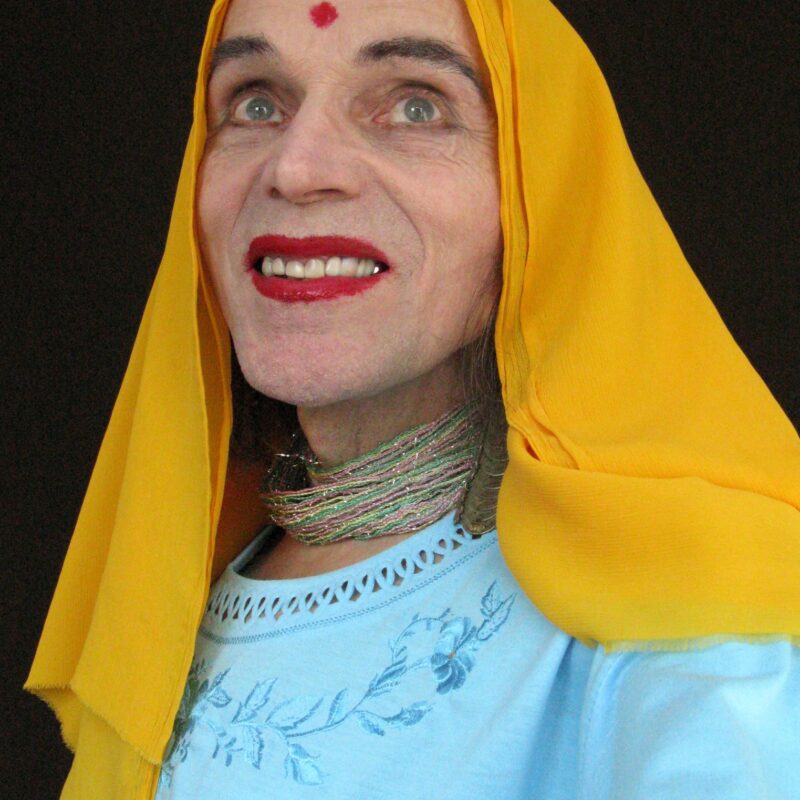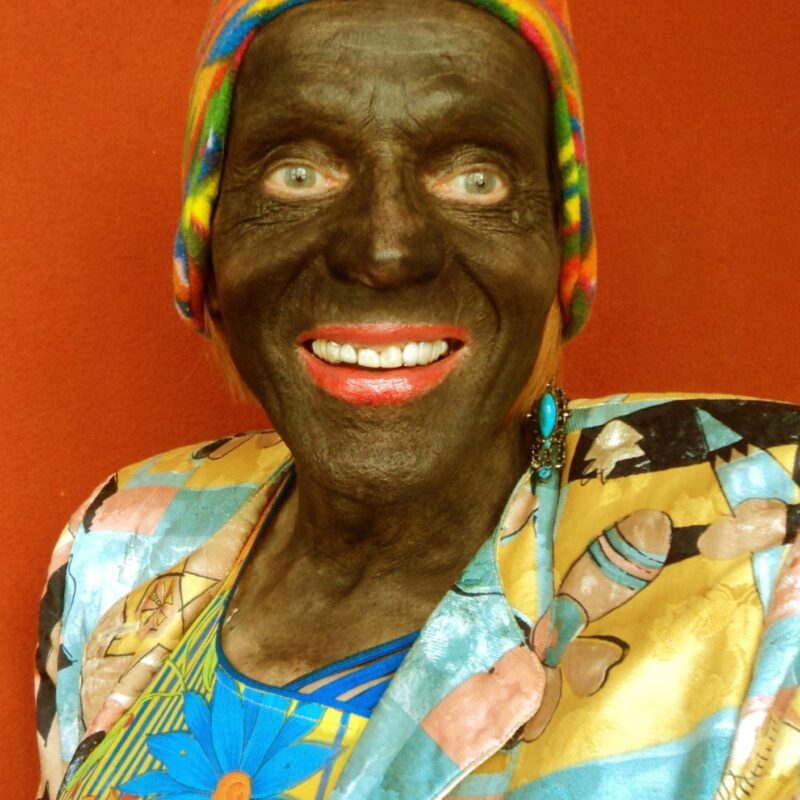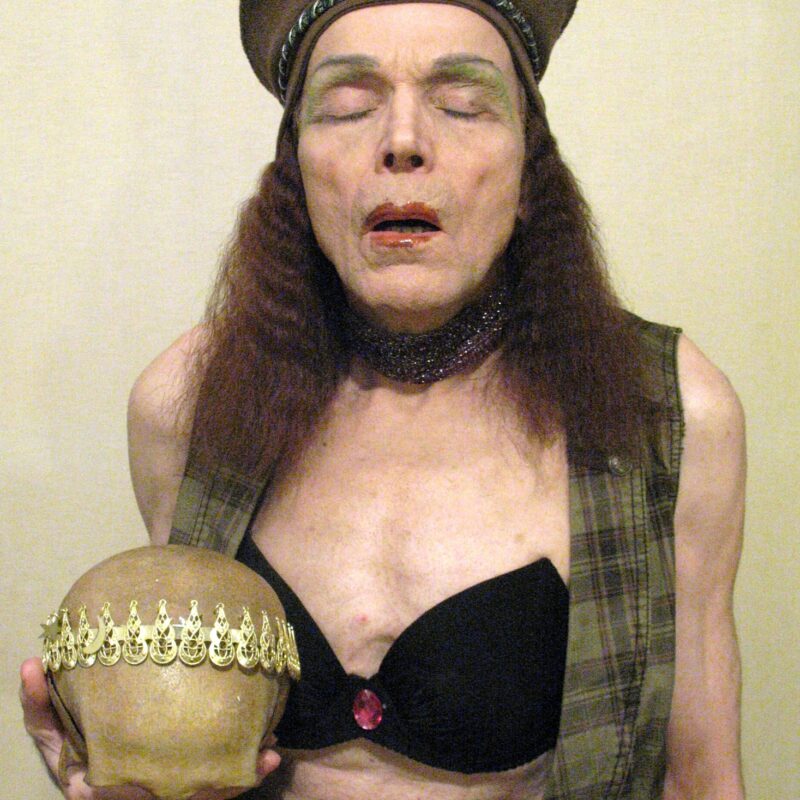Tomasz Machciński: Different Faces, Different Places
Curator: Katarzyna Karwańska
The protagonist of the exhibition Different Faces, Different Places is Tomasz Machciński (b. 1942, lives in Kalisz, Poland), the author of a monumental performance, which has continued uninterrupted since 1966, consisting of more than 22,000 fictional or appropriated identities recorded in photographic self-portraits. Machciński’s open life project is a peculiar atlas of humanity in which various types of people are collected. His earliest metamorphoses recall film stills and draw upon Hollywood’s camp aesthetic, history, and pop culture. With the advent of colour digital photography, the artist began to create improvisatory identities unbound by, and uprooted from, existing systems of representation. The multitude of styles, of ethnic, racial, sexual, and social affiliations in his photographs, summons the streets of New York more than those of Kalisz.
As early as the interwar period, Polish Futurists highlighted the core issue with constructed social realities, such as identity and race, which in performance theory are fleeting and fluid. In 1919, the first avant-garde performance in Poland, A Subtropical Evening Organised by White Negroes, took place, initiated by Anatol Stern and Aleksander Wat. The programme included the reading of texts ‘with outrageous syntax, pornographic and Rabelaisian content,’1 including Stern’s poem ‘Burning a Fig Leaf,’ a piece read by a man wearing only a gauze loincloth. ‘Much was said and written about us after that. It was not flattery,’ Wat later recalled.2 Futurists, in the role of ‘naked people in the cite centre,’ overthrew social and cultural norms in a manifestation of moral and artistic freedom.
It is precisely this freedom that Machciński seeks to achieve, not via contestation, but by affirmation, replacing the ‘naked man’ with myriad colourful identities. The artist creates characters and reconstructs them, at the same time processing and questioning the stereotypical categories that divide people, thus exposing the performative nature of all identities. Despite an evident romance with primitivism, Machciński’s creative practice, as with that of the Futurists, is devoid of any intention of causing hurt. Instead, it appears as a universalistic, humanistic strategy that gathers together in one place people of all races, religions, and genders. ‘My characters are not just about Europe—Asia, Africa, the whole world,’ says the artist,3 portraying in his atlas of humanity an extensive, detailed, and colourful taxonomy of human faces and emotions.
Tomasz Machciński’s exhibition is presented in the Europe–Far East Gallery of the Manggha Museum, a European institution dedicated to supporting cultural dialogue between Europe and the countries of the Asia-Pacific region. This is the first comprehensive display of Machciński’s colour photography, created in the years 2006–2018. The exhibition space—with its tranquility and economical, minimalist architecture—would appear to have been designed for the presentation of works intended to express attitudes of equality and openness to diversity and the multiplicity of aesthetic and cultural patterns. A quotation from Futurist Stanisław Młodożeniec’s ‘Hymn of Peace’ could serve as the epigraph for the exhibition Different Faces, Different Places:
Hail the world!
black, red, yellow, white people –
from Europe – Asia – Australia –
from Africa, America –
recluse of the islands –
kiss your colourful snouts
bruderszaft.4
1 Aleksander Wat, Namopańik barwistanu, 1921. 2 Aleksander Wat, Wspomnienia o futuryzmie, „Miesięcznik Literacki” 1930, nr 2.
2 Aleksander Wat, Wspomnienia o futuryzmie, „Miesięcznik Literacki” 1930, nr 2.
3 Ibidem
4 https://youtu.be/Om_2QaTZe8A. Kalisz 1967.
5 Stanisław Młodożeniec, Hymn pokoju, 1921.
PLACE:
Manggha Museum of Japanese Art and Technology, ul. Marii Konopnickiej 26
EXHIBITION OPEN:
28.05–5.09
TUE–SUN 10.00–18.00
*3.06 exhibition closed
ARTIST/CURATOR PRESENT:
SAT 29.05
15.00–17.00
TICKETS:
30 zł N / 20 zł U / *free entry on Tuesdays





